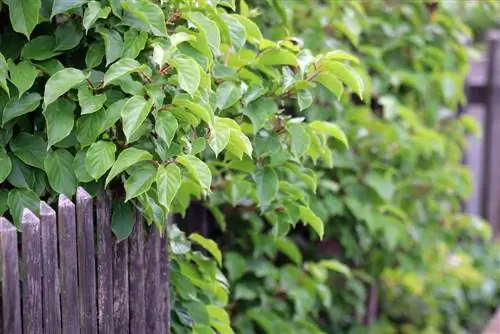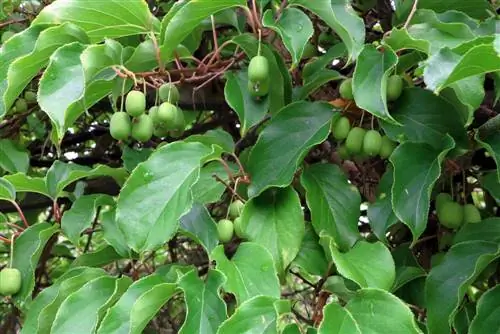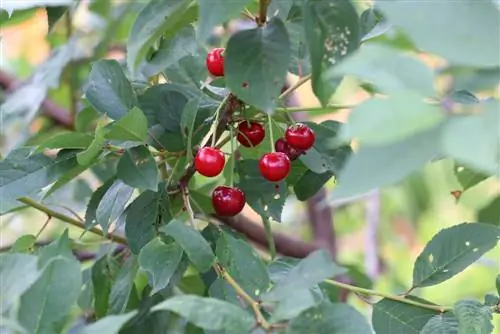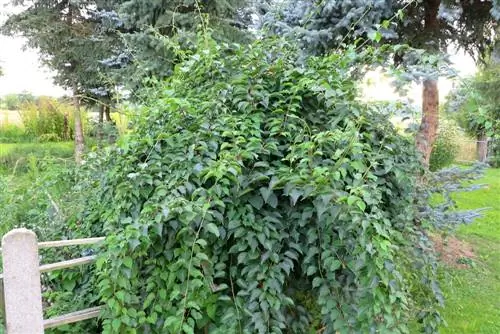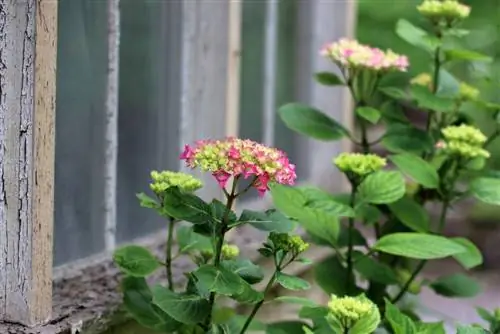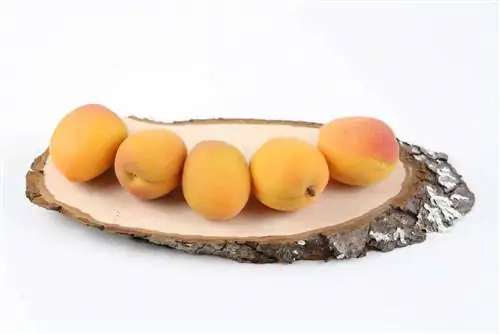- Author admin [email protected].
- Public 2023-12-17 03:39.
- Last modified 2025-01-24 12:45.
The kiwi tree grows like a bush and can therefore be easily cultivated as a climbing plant. The fruit tree originally comes from tropical climates, but there are now very robust and frost-resistant varieties that can also be successfully planted in home gardens. However, the site conditions must be right, as must the care, otherwise the desired harvest will be very poor.
Location & plant substrate
The kiwi comes from tropical areas and is therefore used to warm temperatures. Although much more resistant varieties have now been bred, the plant has retained some of its sensitive properties. Therefore, only a sheltered place is suitable as a location, as the exotic kiwi plants do not tolerate cold temperatures and strong winds particularly well. In addition, the kiwi tree has certain demands on the planting substrate that must be met. Otherwise the plant will not feel comfortable and will not produce a bountiful harvest. Before planting, the pH value of the soil can be determined using a test so that appropriate countermeasures can be taken if necessary.
- Optimal locations are wind-protected and warm locations
- A house wall facing south or southwest is perfect
- Nutritious and humus-rich plant substrate is ideal
- pH value should be in the slightly acidic range, between 4.5 and 5.5
- Soils rich in lime are poorly tolerated
- Mix in rhododendron soil before planting
Tip:
If the soil at the planned location is very poor in nutrients and the pH value is higher than 6, then it must be prepared before planting. Acidic compost soil is suitable for adding nutrients, which allows the pH value to be lowered at the same time.
Plants
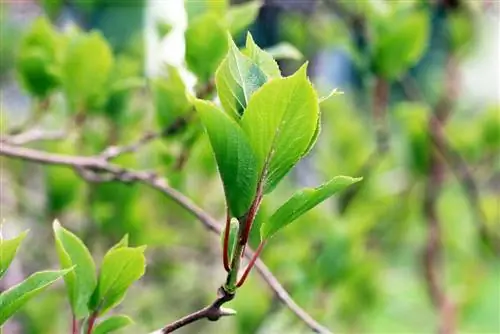
The kiwi plant is extremely sensitive to frost, so it should only be planted after late spring, when the last frost nights with the ice saints have subsided. When buying new kiwi plants, it is important to pay attention to the he alth of the specimens so that they can develop well from the start in the new location. Before planting, the plants should be watered well before they go into the ground. To ensure that the root ball is sufficiently ready to absorb water and nutrients, it should be pierced several times all around with a sharp and clean knife.
- The ideal time for planting is in early summer
- Prepare the soil, check the pH value with a test
- Dig up a sufficiently large planting hole
- Loosen the soil well to a depth of about 30 cm
- Carefully remove the root ball from the planter
- Carefully place the plant in the hole
- Root should merge flush with the trunk at the soil surface
- Pour the removed soil back into the planting pit
- Pour plenty and keep evenly moist
- If necessary, add some more soil after a while
Trellis
Kiwi trees are climbing plants and can therefore be cultivated in many places in the garden. If the shrub is given a suitable climbing aid, it will also climb a fence or twine along walls. The warm conditions of this location and a stable trellis are crucial. Due to its climbing properties, the plant forms a dense canopy of leaves on a suitable structure from which the kiwi fruits hang down. Since many fruits can develop, the climbing aid must be able to support this weight for a long time.
- Kiwi plants grow vigorously
- Leave space at the top and sides
- Pull up like a vine on a climbing frame
- Make sure the climbing frame is stable
- Set up posts with a length of 2-2.5 m
- One stake is required per plant
- Maintain a distance of at least 4 m between the posts
- Distances should be a maximum of 6 m
- Pull thick wires from the first to the last post
- The first wire at a height of approx. 80 cm
- The next wire about 50 cm higher
- The one after next about 1 m above it
Watering & Fertilizing
Kiwi trees produce large leaves and lots of juicy fruits, so the plants need a lot of water to develop well. The kiwi must be watered regularly, especially during dry weather, otherwise the fruit growth will stop or the fruits will only develop a lean flavor. The plant is much less demanding when it comes to fertilizing, although additional fertilizer applications are required during fruit development.
- Make sure you water abundantly
- Water regularly
- Pouring units depend on the weather conditions
- Make sure there is sufficient moisture, especially in the summer months
- Use lime-free water for watering
- Collected rainwater is well suited
- Only fertilize from the first year of fruit development
- Mineral and organic fertilizers can be used for fertilization
- Fertilize weekly during the growth phase
- Avoid over-fertilization, the plant cannot tolerate it
Harvest
From a botanical point of view, kiwi fruits are berries that hang down from the climbing plant. It usually takes four to five years before the first fruits can be harvested. If the kiwi tree grows in cooler locations, the fruits often do not fully ripen on the plant at the beginning of autumn. The fruit can ripen indoors on the sunny windowsill and then develop its full flavor.
- Kiwi produces sweet and sour fruits
- Fruit is rich in vitamin C
- Harvest time end of August to September
- In warmer locations, harvest possible until November
- Ripe kiwis don't last too long
- Store very ripe fruits in a cool and dry place
Growth
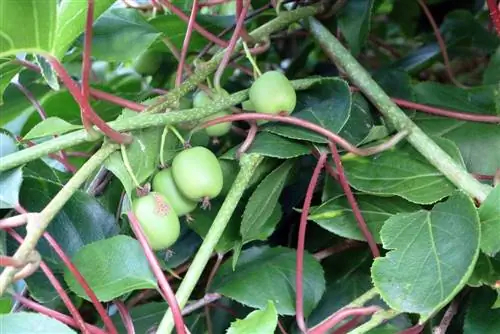
The kiwi tree belongs to the family of rays, which mainly come from tropical and subtropical countries. Due to its climbing properties, the kiwi plant can be cultivated in a similar way to wine and is a beautiful decoration for the garden area.
- Strong-growing and shrubby tree
- Can reach heights of up to 15 m
- Growth form twisting in all directions
- Flower buds are created the previous year
- Bears fruit on annual shoots
- Remove harvested fruit shoots before the season
Cutting
The right time plays an important role when pruning the kiwi. If this is pruned in spring, the tree can bleed, which lasts all summer. This circumstance leads to a weakening of the immune system and can end in an infestation of pests.
- Ideally prune in autumn, immediately after flowering
- Cut new shoots back to around 50 cm
- Make sure your cutting tools are clean and sharp
- Can also tolerate heavy pruning
- After that, the flowers won't bloom next spring
Wintering
Young kiwi trees and the frost-sensitive varieties need additional winter protection. Ideally, these specimens can overwinter in a bucket frost-free for the first few years of life until they have developed sufficient winter hardiness. If hardy varieties have been planted on a warm house wall with lots of sun, then they usually do not need any additional winter protection. Kiwis are not evergreen; the trees gradually shed all their leaves in autumn. This process can often take longer, until the end of November or even sometimes until mid-December.
- Plan winter protection for young and exposed plants
- Normal specimens also enjoy additional protection
- Lay out a warming layer of mulch
- Pile dried leaves around the trunk
- Pile up the leaves to a height of about 40-50 cm
- This will protect roots and trunk from frostbite
- Rotting leaves give off the resulting heat
- Avoid watering and fertilizing during the winter season
- In spring, remove the leaves and start watering again
Propagate
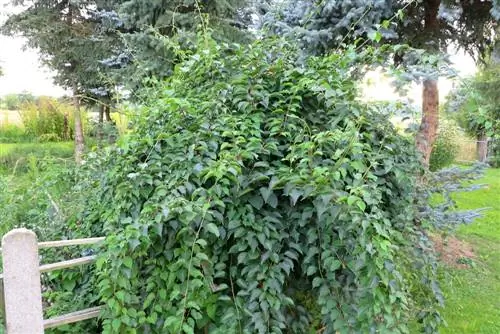
The kiwi tree is a dioecious plant, with either female or male flowers on one plant. Both sexes are absolutely necessary to produce fruit, which is why the male plants must grow next to the female plants. However, only the female plants bear the delicious fruits. There are now new breeds available in specialist retailers that carry both sexes and are self-fertile. However, their taste is often not convincing. Kiwi propagation occurs from the seeds obtained from the plant. If you want to boost the propagation process, you can use a mini greenhouse.
- Removing seeds from the pulp
- Sow yield in pot with soil and press lightly
- Do not cover seeds with soil
- Then pour carefully
- Put clear film over the pot to prevent the soil from drying out
- After about two weeks the seeds germinate and the first leaves appear
- Now remove the foil
- Plant individually at a size of 3-5 cm
- Always cultivate female and male kiwis
- Self-pollinated varieties often disappoint in taste
Diseases & Pests
The kiwi plants are not only relatively easy to care for, but are also hardly susceptible to pests and diseases. However, errors in care have a negative impact on the immune system and fruit formation.
- Care errors often lead to leaf drop and poor harvests
- Conditionally susceptible to the red spider mite
- Wash off pests with soapy water

